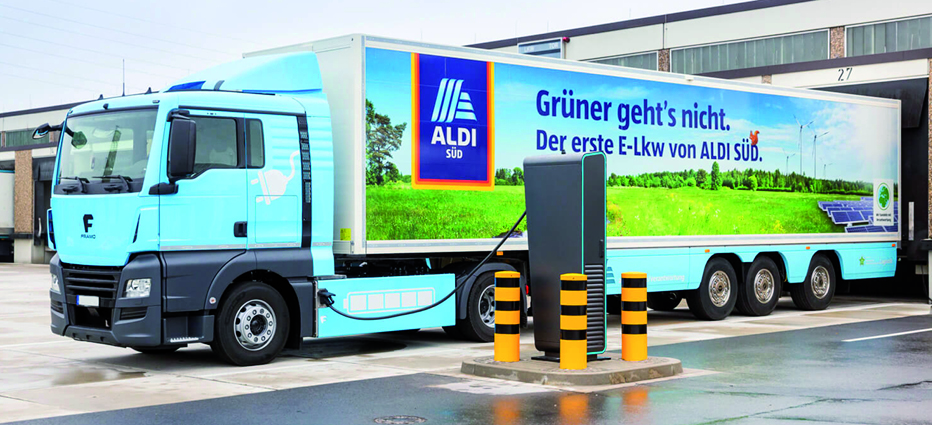 Foto: Bosch AG
Foto: Bosch AG
Worldwide, research and development for the future mobile communications standard 6G is picking up speed. Companies and countries are investing heavily in this technology. Bosch is extensively involved in projects, collaborations, and initiatives at both national and international level to develop important foundations for 6G technology. “6G will be much more than just an infrastructure for networking; it will give autonomous driving cars, smart cities, and connected industries an enormous boost in efficiency. That’s why 6G is a strategically important technology field for Bosch,” says Dr. Andreas Müller, who bundles and manages 6G activities at Bosch. At the company, some 40 associates are currently working on 6G technology. “In the next two years, that number is expected to double,” says Müller. Currently, Bosch is investing a mid-seven-figure sum in 6G research and development.
Bosch and Nokia expand research collaboration to include 6G
Bosch and Nokia have announced they are now expanding their 2017 collaboration to develop industrial IoT solutions in 5G to include the new 6G technology. The two companies are jointly researching the next generation of networks and investigating how future 6G networks can be used for both communications and sensors.
Extensive Bosch involvement at national and international level
Bosch is currently contributing its expertise and experience to five publicly funded projects. The projects “6G-ICAS4Mobility,” “KOMSENS-6G,” and “6G-BRAINS” are primarily aimed at integrating communication and sensor-based environment recognition. Bosch has assumed consortium leadership in the former project. In addition to examining relevant scenarios for road traffic, findings from the project work will also serve in particular as a technical basis for applications in the area of networked drones and in the area of Industry 4.0 (for example, for driverless transport systems). The “6G-ANNA” and “6G-SHINE” projects focus on new networking structures. These are intended to make future E/E architectures in vehicles or robot cells in industry more efficient. Bosch is also actively involved in a leading role in early discussions and activities on future mobile communications standards within various industry alliances. In the 5G Automotive Association (5GAA), for example, leading companies from the automotive and telecommunications industries are working together to develop solutions for the mobility of the future. In the 5G Alliance for Connected Industries and Automation (5GACIA), industrial companies are focusing on the networking of machines and plants.
Networks with a sixth sense through integration of sensor technology
Among other things, the next generation of mobile communications will integrate new functionalities similar to radar sensors. With 6G, it will be possible to detect the position of objects in the network’s coverage area – and without these objects having to be equipped with a radio module. 6G will enable extremely high data rates of up to one terabit per second, combined with very low latency times of the order of around 100 microseconds – that’s four times faster than a lightning strike. This will make it possible, for example, with the help of digital twins, to monitor and simulate manufacturing processes from reality in a virtual world without time and space restrictions. Experts expect the first 6G standard to be completed in 2028.
In recent months, Germany and Europe have launched numerous 6G projects. The aim here: to strengthen their technological sovereignty. The German government, through the Federal Ministry of Education and Research (BMBF), is funding 6G activities with around 700 million euros over the next three years. In addition, another almost 900 million euros have been earmarked in the EU budget until 2027. Japan and the USA have also launched corresponding investment programs totaling around 4.5 billion U.S. dollars.
6G project creates new opportunities for connected mobility

Connected vehicles make mobility more efficient, safer, more comfortable and more intelligent. To achieve this, vehicles – whether on the road, in the air or on a factory floor – must be able to exchange data quickly and reliably with each other and with their surroundings. Various sensors such as radars play a crucial role in this. Sensors enable vehicles to “see” and recognize their surroundings; they help to avoid collisions, for example. Sensors are essential for autonomous vehicle operation in particular. Until now, communication and sensor systems in vehicles have generally run independently of each other. This is despite the fact that they have many things in common, for example in signal processing or system architecture.
The aim of the “6G-ICAS4Mobility” project is to more closely link the communication and radar systems, which have so far been operated separately, and integrate them into a common 6G system. Over the next three years, the project will develop important foundations for the future 6G standard and thus make an important contribution to securing the technological sovereignty of Germany and Europe. Led by consortium leader Bosch, the consortium of universities, automotive suppliers, communications and radar specialists, and drone providers has begun research work.
In the future, sensor data flowing in real time from various mobile terminals (such as vehicles) will be coordinated and combined via 6G mobile communications to create a more accurate picture of the surroundings. This can improve traffic safety and increase the efficiency of road use. At the same time, radar functions will also be integrated directly into future communication modules, leading to cost savings and more efficient use of scarce radio resources.
In addition to considering relevant scenarios for road traffic, findings from the project work will also serve in particular as a technical basis for applications in the area of networked drones as well as in the area of Industry 4.0 (for example, for driverless transport systems). The German Federal Ministry of Education and Research is funding “6G-ICAS4Mobility” with around ten million euros, thus covering 70 percent of the project costs.
Direct data exchange as an important basis
The closer coupling and integration of communication and radar functions (Integrated Communication and Sensing, ICAS) has already been the subject of intensive discussion for several years, particularly in academia. The project now aims to demonstrate the practical performance of the technology so that it can then be incorporated into the future mobile communications standard. “ICAS is considered a key technology for future 6G systems and will open up completely new possibilities that go far beyond the potential of currently used radio technologies,” explains Andreas Müller, initiator of 6G-ICAS4Mobility and project manager for the 6G activities of consortium leader Bosch. “By sharing the radio spectrum, hardware and signal processing, all systems can be implemented much more efficiently overall, with significantly lower costs and lower energy consumption,” says Müller. An important role here is played by the so-called Sidelink, which enables direct communication between two vehicles. The key is that Sidelink can be used independently of the existing mobile communications infrastructure. In this way, safe autonomous driving will also be possible in regions with poor mobile communications connections in the future.
Worldwide, 6G research is picking up speed. The German government alone is funding corresponding activities to the tune of around 700 million euros by 2025; the EU budget has earmarked a further 900 million euros for the period from 2021 to 2027. Similarly, there are huge investment programs in other regions of the world, above all the USA, Japan, South Korea and China. This reflects, among other things, the geopolitical importance of 6G and its expected status in technological sovereignty. Experts expect the first 6G standard to be completed around 2028. www.bosch.com
Read this and other articles on electromobility and autonomous driving in the current issue of eMove360° magazine in german language. Download it here free of charge or order the print version in the shop.